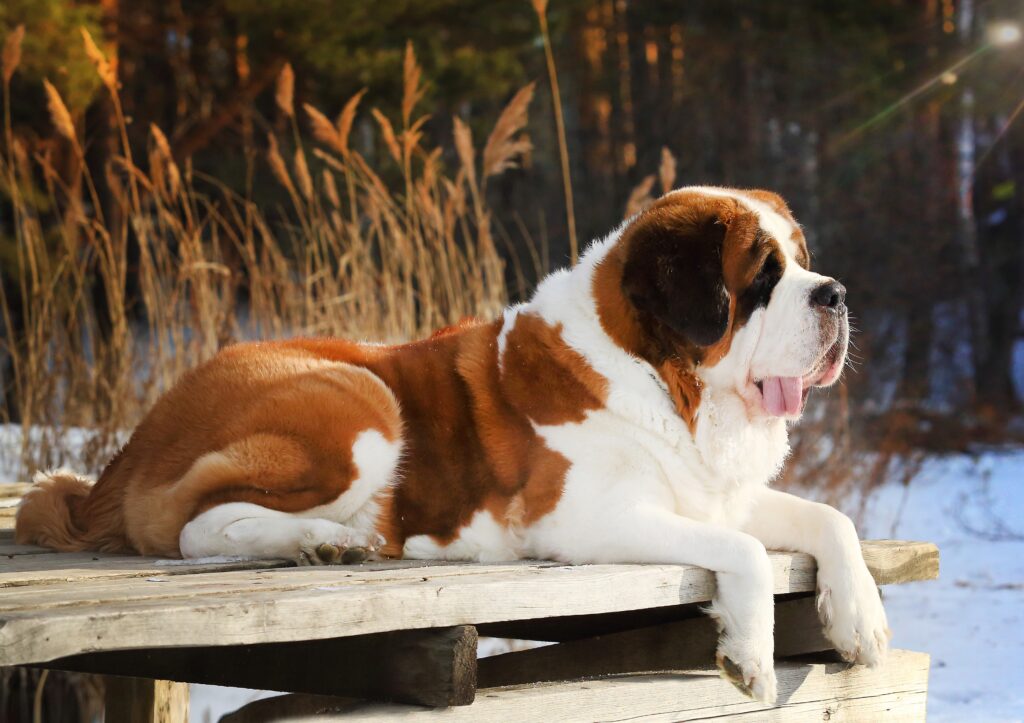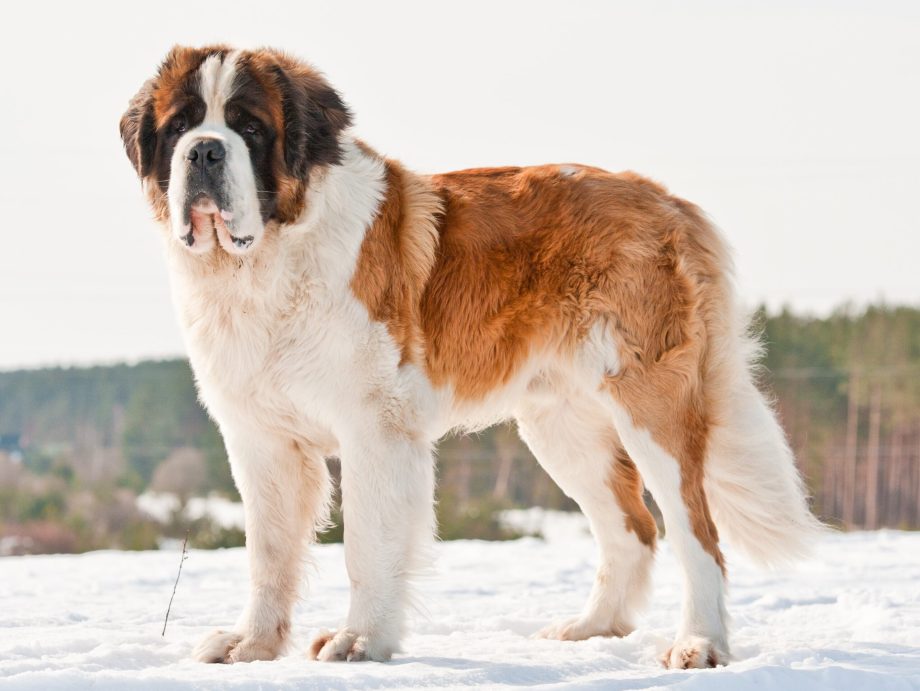The Saint Bernard is a large working dog from the Western Alps of Switzerland and over the years has become famous as a heroic mountain rescue dog. These are true giants of the canine world with a male Saint Bernard weighing in at up to 91 kgs and standing at up to 70 cm tall.
Large, powerful and heavy-boned, Saint Bernards are extremely striking dogs. They have a huge head, wrinkled forehead, large drooping jowls and floppy ears set high on the head. Their eyes are usually dark brown, although occasionally blue, and somewhat droopy. Their coat is either smooth or rough and is typically orangey-red with white, brown and white, or mahogany brindle with white, with some black on the face and ears. Despite their imposing size, these dogs are true gentle giants and are calm and friendly with all they meet. They love to be around their humans and make exceptionally good family dogs which are protective and gentle with children, so much so that they are often referred to as nanny dogs. They are also sociable with other dogs and household pets. Given their large size, early and ongoing training is really important with these dogs, and it is vital that they learn that it is not acceptable to jump up or pull on their lead. Saint Bernards can also have a stubborn streak, although if they understand what is expected of them, will generally be eager to please. Once fully developed, Saint Bernards should be exercised for at least an hour a day, which ideally should include walks, playtime and plenty of off-lead time in a secure environment. These dogs also shed a lot and will need to be brushed at least three times a week and cleaned around the skin folds on their faces. Their large hanging jowls also mean that they will drool a lot. These gentle giants make wonderful additions to most family households, so long as there is space for such a large dog and owners dont mind a bit of loose hair and drool.

History
The Saint Bernard is the national dog of Switzerland and was named after the monk who founded the Great St Bernard Hospice to care for pilgrims crossing the treacherous Great St Bernard Pass in the Swiss Alps. It is reported that one particular Saint Bernard called Barry saved somewhere between 40 and 100 people lost or trapped in the mountain snow. His achievement led to a monument to Barry being placed in the famous Cemetery of Dogs in Paris. The Saint Bernard was originally a type of Alpine Mastiff, which over the years is believed to have been crossed with the Newfoundland and the Bloodhound, leading to the Saint Bernard known today. In fact, the Saint Bernard was known as the Alpine Mastiff well into the 19th Century, and it was not until 1888 thats current name was adopted.





